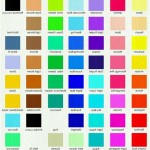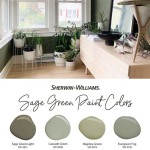Exploring The Wonders Of Crayola Watercolor Painting
Crayola, a household name synonymous with childhood creativity, extends its artistic reach beyond crayons and markers to include watercolor painting. While often viewed as a beginner's medium, Crayola watercolor offers a surprisingly versatile and accessible entry point into the world of fine art. This article will explore the key characteristics, techniques, and possibilities inherent in using Crayola watercolor paints, demonstrating their potential for both novice and experienced artists alike.
The appeal of Crayola watercolor lies in its affordability, availability, and ease of use. These factors make it a particularly attractive option for parents looking to introduce their children to painting, educators seeking a cost-effective classroom art supply, and individuals exploring watercolor as a new hobby. While professional-grade watercolors are known for their vibrant pigments and lightfastness, Crayola watercolors provide a convenient and less intimidating alternative for experimentation and practice.
The composition of Crayola watercolors typically involves finely ground pigments mixed with a binder, often gum arabic or a similar water-soluble adhesive. This binder holds the pigments together and allows them to adhere to the painting surface. The quality and concentration of pigment directly influence the vibrancy and transparency of the resulting paint. While Crayola watercolors may not possess the same level of pigment saturation as professional-grade paints, they are formulated to be safe, non-toxic, and wash easily from skin and clothing – crucial considerations for younger artists and those prone to accidental spills.
Understanding Crayola Watercolor Sets and Materials
Crayola watercolors are commonly available in pan sets, which feature individual cakes of solid paint housed in a plastic palette. These sets often include a brush, further simplifying the process for beginners. The pans are activated by adding water to the surface of the paint cake, releasing the pigment and allowing it to be picked up with a brush. The more water added, the lighter and more transparent the resulting wash will be. Conversely, using less water will produce a more concentrated and opaque color.
Beyond the basic pan set, artists can enhance their Crayola watercolor experience by incorporating additional materials. Watercolor paper, designed to withstand moisture without buckling or warping, is essential for achieving optimal results. Heavier weight papers, such as 140 lb (300 gsm), are generally recommended for more extensive washes and layering techniques. In addition to watercolor paper, brushes of varying sizes and shapes can be used to create different effects. Round brushes are ideal for detail work and fine lines, while flat brushes are suitable for broad washes and filling in larger areas.
Other helpful accessories include a water container for rinsing brushes, a palette for mixing colors, and paper towels or a sponge for blotting excess water. Masking tape can also be used to create clean edges and protect areas of the paper from paint. These additional materials, while not strictly necessary, can significantly improve the overall painting experience and allow for greater control and precision.
Mastering Basic Crayola Watercolor Techniques
Several fundamental watercolor techniques can be successfully applied using Crayola watercolors. One of the most basic is the "wet-on-wet" technique, which involves applying paint to a surface that has already been wetted with clean water. This allows the colors to blend seamlessly and create soft, ethereal effects. The wet-on-wet technique is particularly useful for painting skies, backgrounds, and other areas where a smooth transition is desired.
The "wet-on-dry" technique, conversely, involves applying paint to a dry surface. This results in sharper, more defined edges and allows for greater control over detail. The wet-on-dry technique is ideal for painting intricate details, such as leaves, flowers, or architectural elements. By combining both wet-on-wet and wet-on-dry techniques, artists can create paintings with a range of textures and effects.
Another important technique is layering, also known as glazing. This involves applying thin, transparent washes of color over one another to build up depth and complexity. Each layer should be allowed to dry completely before applying the next. Layering allows artists to create subtle variations in color and value, and to achieve a sense of luminosity and depth in their paintings. It is crucial to work from light to dark when layering watercolors, as it is difficult to lighten areas once they have been painted with a darker color.
Lifting color is another technique that can be used to correct mistakes or create interesting effects. This involves using a clean, damp brush or paper towel to remove paint from the surface of the paper. Lifting color can be used to lighten areas, create highlights, or blend colors together. The success of lifting color depends on the type of paper used and the amount of time the paint has been allowed to dry. It's generally easier to lift color from smoother papers than from rougher papers.
Exploring the Creative Potential of Crayola Watercolors
Despite the limitations compared to professional-grade paints, Crayola watercolors offer numerous creative possibilities. Their inherent transparency makes them well-suited for creating light and airy landscapes, delicate floral paintings, and whimsical illustrations. The vibrant, albeit less saturated, colors can be used to create cheerful and engaging artwork, particularly appealing to children and those seeking a lighthearted approach to painting.
Crayola watercolors can also be combined with other art supplies to create mixed-media artwork. For example, watercolor pencils can be used to add fine details and outlines to watercolor paintings. Ink pens can be used to create bold outlines and textures. Collage elements, such as paper scraps or fabric, can also be incorporated into watercolor paintings to add visual interest and dimension.
The ease of use and cleanup associated with Crayola watercolors makes them ideal for plein air painting, or painting outdoors. Their portability allows artists to capture landscapes and natural scenes directly from observation. While professional-grade watercolors may offer greater lightfastness for outdoor works intended for sale, Crayola watercolors are sufficient for creating studies and capturing fleeting moments of natural beauty.
Furthermore, limitations can often spur creativity. The challenges presented by the less intense pigmentation and potential for muddiness when colors are heavily mixed can force artists to develop innovative techniques and approaches. This can lead to unexpected discoveries and a unique artistic style. The experience gained from working with Crayola watercolors can also serve as a valuable foundation for transitioning to more advanced watercolor techniques and materials in the future.
Ultimately, Crayola watercolor painting offers a gateway to artistic expression that is accessible, affordable, and enjoyable. Whether used by children exploring their creative potential, educators fostering artistic development in the classroom, or adults seeking a relaxing and rewarding hobby, Crayola watercolor provides a valuable tool for artistic exploration and self-expression. The limitations are real, but the potential for fun and learning is undeniable.

Watercolor Painting With Color Wonder Markers Wow Arty Mommy

Fun Landscape Painting Adventures With Crayola Paints

Can You Use Crayola Markers As Watercolor

Signature Watercolor Crayons Painting Set

Artista Ii Watercolor Paints 16 Count

Can You Use Crayola Markers As Watercolor

Artista Ii Watercolor Paints 16 Count

My Perspectives Crayola Artista Ii Watercolour

Crayola Watercolor Paint Tiktok

Watercolor
Related Posts








